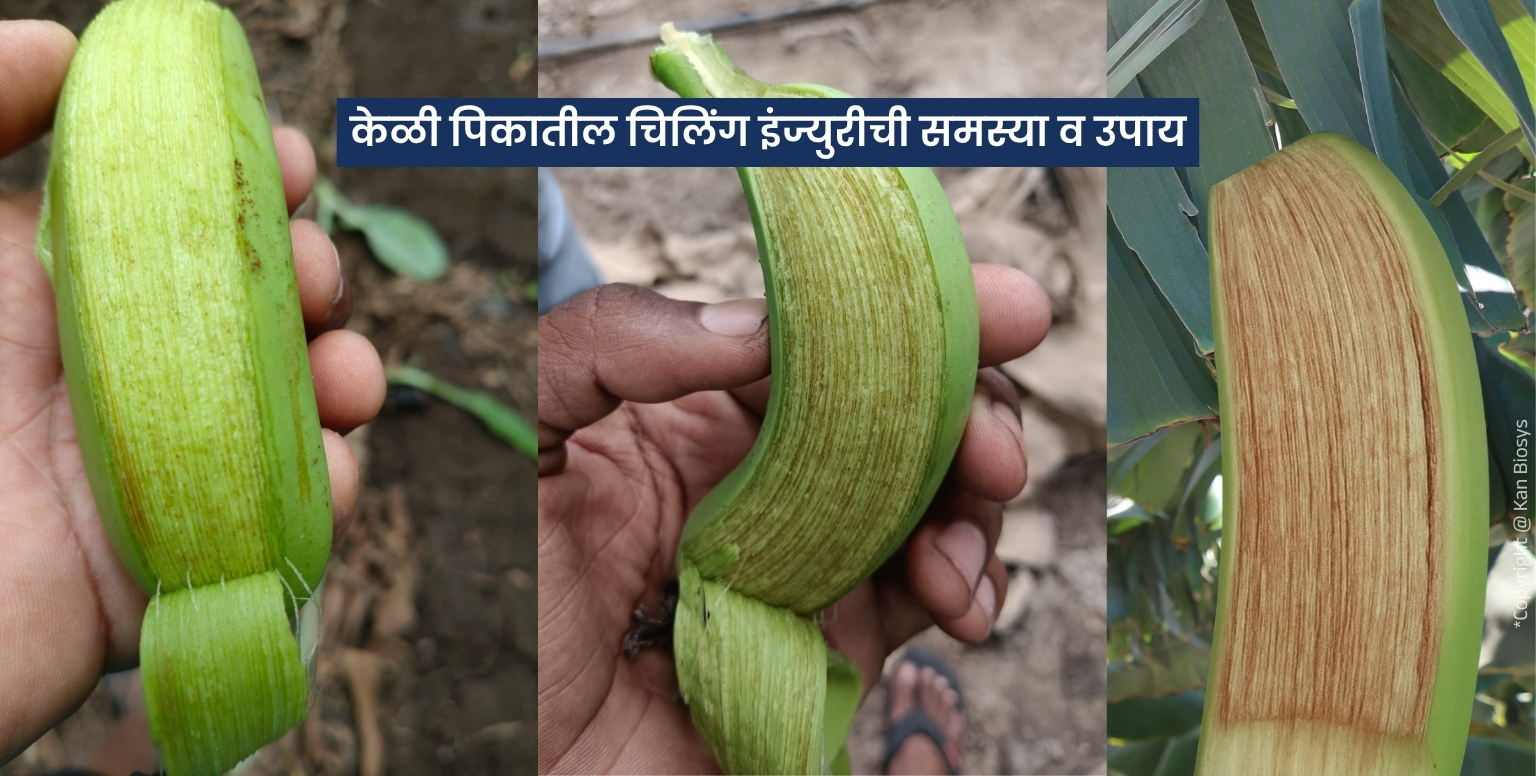Role of Biofertilizer in Organic Farming: A Sustainable Solution
Role of Biofertilizer in Organic Farming: A Sustainable Solution

One of the biggest challenges in organic farming is maintaining high productivity while strictly avoiding synthetic fertilizers, pesticides, and genetically modified organisms. Farmers committed to sustainability and regenerative agriculture must work with nature’s own systems to nourish soil and their crops — The role of biofertilizer in organic farming becomes truly indispensable.
Unlike chemical fertilizers that deliver nutrients directly to the soil, they end up disrupting the soil biology that is essential for plants to thrive. Biofertilizers in organic farming work by activating the living ecosystem beneath the soil. These biological inoculants harness beneficial microbes — such as nitrogen-fixing bacteria, phosphate-solubilizing organisms, and mycorrhizal fungi — to naturally regenerate the soil to replenish soil fertility, enhance nutrient availability, and promote healthier plant growth. In doing so, they help bridge the gap between sustainability and productivity, the core balancing act every organic farmer faces.
Biofertilizers are not just supportive inputs; they are the engine that powers long-term organic success. They restore microbial diversity, reduce dependency on costly external inputs, and improve soil resilience against climate stress. Most importantly, biofertilizers align perfectly with global and Indian organic certification frameworks — including NPOP and PGS-India — which recognize these natural inoculants as essential, certification-friendly tools for maintaining soil fertility and ecological balance.
In the following sections, we’ll explore five critical ways biofertilizers are redefining the future of organic agriculture:
- Bridging the Nutrient Gap in Organic Systems
- Enhancing Soil Biological Health and Microbial Diversity
- Reducing Input Costs While Maintaining Productivity
- Meeting Organic Certification Standards and Compliance
- Building Climate Resilience and Environmental Sustainability
Through these roles, the role of biofertilizer in organic farming becomes clear — it’s not just an alternative input; it’s the cornerstone of a greener, more productive, and truly sustainable farming future.
Read Also: Can Bio Fertilizer Be Mixed with Chemical Fertilizer?
Bridging the Nutrient Gap in Organic Systems
A persistent challenge in organic farming lies in meeting the nutrient requirements of modern, high-yielding crop varieties using only traditional organic inputs. Organic farmers primarily depend on farmyard manure (FYM), compost, and green manures — all rich in organic matter but limited in their ability to supply nutrients quickly. While these materials improve soil structure and long-term fertility, their nutrient release is gradual, often taking weeks or months. In contrast, crops require a steady and timely supply of nutrients throughout their growth stages, especially during critical periods like flowering and fruiting.
This mismatch between nutrient release and plant demand creates what experts call the “nutrient gap” — a key factor that often limits productivity in organic systems. Addressing this gap without resorting to synthetic fertilizers is essential to make organic farming both sustainable and profitable.
This is where the role of biofertilizers in organic farming becomes indispensable. Biofertilizers promote carbon sequestration and act as powerful nutrient mobilizers and suppliers, working synergistically with organic manures. While compost enriches the soil with organic carbon, biofertilizers such as Rhizobium, Azotobacter, Azospirillum, Phosphate Solubilizing Bacteria (PSB), and Mycorrhizal fungi biologically convert locked and unavailable nutrients into plant-accessible forms. For example, nitrogen-fixing bacteria such as Rhizobium capture atmospheric nitrogen and make it available to plants, while phosphate-solubilizing microbes release locked phosphorus from soil minerals.
By continuously replenishing essential nutrients, biofertilizers in organic farming ensures that crops receive a balanced supply throughout their lifecycle — improving both yield and soil health without compromising organic integrity. In essence, biofertilizers bridge the nutrient gap that organic manures alone cannot fill, empowering farmers to sustain productivity while nurturing the planet.
Enhancing Soil Biological Health and Microbial Diversity
At the heart of organic farming lies one undeniable truth — healthy soil is living soil. Beneath every thriving crop exists an intricate, dynamic web of microorganisms that drive nutrient cycling, improve soil structure, and protect plants from stress. These microscopic allies — bacteria, fungi, actinomycetes, and algae — are the true architects of soil fertility and resilience. However, years of intensive farming, chemical inputs, and monocropping have drastically reduced microbial diversity in many farmlands, leaving soils biologically weak and nutritionally imbalanced.
This is where the role of biofertilizer in organic farming becomes transformative. Think of biofertilizers as “probiotic supplements for soil.” Just as probiotics restore gut health in humans, biofertilizers reintroduce beneficial microbes into the soil ecosystem. They enrich the rhizosphere with living organisms such as nitrogen-fixing bacteria, phosphate solubilizers, potassium mobilizers, and mycorrhizal fungi that stimulate root growth, improve nutrient uptake, and strengthen plant health from the ground up.
Regular application of biofertilizer in organic farming not only enhances microbial diversity but also helps rebuild the soil’s natural nutrient cycle. The result is soil that breathes, retains water efficiently, and sustains plant life season after season. Over time, this living soil becomes more resilient to drought, salinity, and climate fluctuations — key pillars of sustainable agriculture.
For organic farmers, investing in microbial health isn’t just about short-term productivity; it’s about building a self-sustaining soil ecosystem that ensures long-term fertility, reduced dependency on external inputs, and consistent crop performance. By revitalizing soil life, biofertilizers truly embody the principle of feeding the soil, not just the plant — the very foundation of organic and regenerative farming.
Reducing Input Costs While Maintaining Productivity
One of the biggest concerns for farmers considering a shift to organic farming is financial — “Will I lose money if I stop using chemical fertilizers?” The truth is, when viewed holistically, organic farming with biofertilizers can actually be more profitable and sustainable in the long run.
Chemical fertilizers deliver quick results, but they come with hidden costs — soil degradation, reduced microbial activity, declining organic matter, and increased dependency on repeated applications. Over time, this leads to diminishing returns and higher input expenses. In contrast, the role of biofertilizer in organic farming is to build fertility naturally, restoring soil life and nutrient balance while keeping recurring costs low.
Biofertilizers are biological inoculants, not synthetic chemicals. They multiply within the soil, creating a self-sustaining nutrient cycle. This means that a single well-timed application can benefit the crop for several weeks, often reducing the need for repeated fertilizer inputs. Moreover, biofertilizers improve the efficiency of organic manures, making every kilogram of compost or farmyard manure more effective in nutrient release.
Here’s a simple comparison that shows how biofertilizer in organic farming stacks up economically against chemical fertilizers:
| Input Type | Average Cost per Acre (INR) | Application Frequency | Long-Term Impact |
|---|---|---|---|
| Chemical Fertilizers (NPK Mix) | ₹3,500 – ₹5,000 per acre | 2–3 times per season | Short-term yield boost but soil degradation over time |
| Biofertilizers (Rhizobium, PSB, Mycorrhiza Mix) | ₹800 – ₹1,200 per acre | Once or twice per season | Sustainable nutrient cycling and improved soil health |
| Organic Manure + Biofertilizer Combo | ₹2,000 – ₹2,500 per acre | Once per season | Balanced fertility, better nutrient efficiency, long-term soil improvement |
(Data references: Kan Biosys product range pricing and average market input estimates, 2024)
Over time, the difference becomes even more pronounced. Farmers using biofertilizer in organic farming report 20–30% savings in input costs per season while maintaining — and often improving — productivity levels. The enhanced soil structure and microbial activity lead to better nutrient uptake and water retention, which in turn translates to higher crop quality and resilience.
In short, biofertilizers offer a double advantage — economic efficiency and ecological sustainability. By reducing external input dependency, farmers can retain more profits while investing in long-term soil health — a win-win for both the farmer and the environment.
Meeting Organic Certification Standards and Compliance
Organic certification is not just about eliminating synthetic chemicals — it’s about adopting a system that actively builds soil fertility through natural, biological means. Under leading organic standards worldwide, including India’s National Programme for Organic Production (NPOP) and Participatory Guarantee System (PGS-India), the use of biological inputs such as biofertilizers is not merely permitted — in many cases, it is required to maintain soil productivity and ecological balance.
The role of biofertilizer in organic farming is therefore central to compliance with certification guidelines. These microbial inputs — like Rhizobium, Azotobacter, Azospirillum, Phosphate Solubilizing Bacteria, and Mycorrhizal inoculants — are explicitly recognized under NPOP and PGS-India as approved soil fertility enhancers. They are categorized as “biological inputs” that promote nutrient mobilization and plant health without violating the strict “no synthetic” rule that governs organic farming.
Internationally, similar standards — including IFOAM (International Federation of Organic Agriculture Movements) and the USDA National Organic Program (NOP) — also encourage or require the use of microbial inoculants to sustain long-term soil fertility. These global frameworks align closely with India’s approach, emphasizing that soil fertility in organic systems must be maintained primarily through biological processes, not external chemical inputs.
That’s why biofertilizers are often described as “certification-friendly” inputs. They not only meet all the regulatory requirements for organic farming but also enhance the sustainability metrics that certifying bodies look for — such as improved soil carbon content, biodiversity, and reduced environmental footprint.
When organic farmers use biofertilizer in organic farming, they’re not just feeding crops — they’re meeting compliance standards, improving soil health, and aligning their practices with both national and international definitions of true organic agriculture.
In essence, biofertilizers are the bridge between compliance and performance — helping farmers stay certified while ensuring their fields remain fertile, productive, and biologically alive.
Building Climate Resilience and Environmental Sustainability
As the global climate crisis deepens, agriculture faces unprecedented challenges — erratic rainfall, rising temperatures, declining soil fertility, and increasing pest pressures. For farmers, the question is no longer just about productivity, but survival and resilience. In this context, the role of biofertilizer in organic farming extends far beyond crop nutrition — it’s a vital tool for climate adaptation and environmental sustainability.
Chemical-dependent farming systems emit greenhouse gases, degrade soil carbon, and leave farmlands vulnerable to drought and nutrient loss. In contrast, biofertilizer in organic farming builds soil health naturally, increasing organic carbon content and enhancing water-holding capacity. Beneficial microbes such as nitrogen-fixing bacteria and mycorrhizal fungi improve root architecture, allowing crops to access moisture and nutrients even under stress conditions. This biological resilience translates to greater stability in yields — a critical factor as weather patterns grow more unpredictable.
Moreover, biofertilizers help mitigate climate change by reducing reliance on energy-intensive synthetic fertilizers, which are among the major sources of agricultural greenhouse gas emissions. By harnessing biological nitrogen fixation and nutrient cycling, farmers can cut their carbon footprint while maintaining soil fertility — effectively turning their fields into living carbon sinks.
From an ecological standpoint, biofertilizers also play a key role in restoring biodiversity. They foster microbial diversity below the surface and support pollinators and beneficial insects above it, creating a balanced ecosystem that sustains itself naturally.
By integrating biofertilizers into organic systems, farmers are adopting what can truly be called “future-proof agriculture.” It’s an approach that meets today’s food production needs while safeguarding tomorrow’s environment. Through the role of biofertilizer in organic farming, we’re not just growing crops — we’re cultivating climate resilience, restoring ecosystems, and laying the foundation for a greener, more sustainable future for generations to come.
FAQs
1. What is the role of organic fertilizer?
Organic fertilizers improve soil fertility by supplying nutrients naturally while increasing soil organic matter. They feed the soil’s microorganisms, enhance nutrient retention, and promote long-term sustainability — unlike synthetic fertilizers that only feed the plant temporarily.
2. What are bioinoculants in organic farming?
Bioinoculants, also known as biofertilizers, are living microorganisms that enhance plant growth by improving nutrient availability. In organic farming, they include nitrogen-fixing bacteria, phosphate-solubilizing microbes, and mycorrhizal fungi that strengthen soil health and plant resilience.
3. What are the 4 principles of organic farming?
According to the International Federation of Organic Agriculture Movements (IFOAM), the four principles are:
- Health: Sustain and enhance the health of soil, plants, animals, and humans.
- Ecology: Work with natural systems and cycles.
- Fairness: Ensure equity and justice for all living beings.
- Care: Manage agriculture responsibly for the well-being of future generations.
4. What are the 5 benefits of using organic fertilizer?
- Improves soil structure and microbial activity.
- Reduces dependency on chemical inputs.
- Enhances nutrient and water retention.
- Supports long-term soil fertility and carbon buildup.
- Promotes sustainable and eco-friendly farming practices.
5. Which crops benefit the most from biofertilizers?
Almost all crops benefit, but the most responsive include legumes (like soybean, groundnut, pulses), cereals (rice, wheat, maize), vegetables, fruits, sugarcane, and plantation crops. The role of biofertilizer in organic farming is particularly vital for crops that depend heavily on nitrogen and phosphorus.
6. How much do biofertilizers cost compared to chemical fertilizers?
On average, biofertilizer in organic farming costs around ₹800–₹1,200 per acre, whereas chemical fertilizers can cost ₹3,500–₹5,000 per acre per season. In the long term, biofertilizers also reduce recurring expenses by improving soil health and nutrient efficiency.
7. How long does it take to see results from biofertilizers?
Results typically appear within one crop cycle (60–120 days). However, the most significant benefits — improved soil structure, microbial diversity, and long-term fertility — become evident over multiple seasons of continuous application.
8. Will biofertilizers work in all types of soil?
Yes, but their effectiveness depends on soil health and conditions. For best results, biofertilizer in organic farming should be applied to soils with good organic matter, proper moisture, and pH between 6.0–7.5. Degraded or highly saline soils may require prior organic amendment to create a conducive microbial environment.
Conclusion
In the pursuit of truly sustainable agriculture, biofertilizers have emerged as an indispensable pillar of organic farming. They bridge the gap between productivity and purity — enriching soil fertility, improving nutrient efficiency, and reducing dependency on costly synthetic inputs. For Indian farmers, the role of biofertilizer in organic farming is more than just an innovation; it’s a necessity for ensuring food security, soil regeneration, and environmental balance.
By harnessing living microbes to mobilize nutrients, strengthen root systems, and build soil resilience, biofertilizer in organic farming transforms conventional cultivation into a regenerative system — one that gives back to the earth rather than depleting it. Beyond the economic and agronomic benefits, this approach aligns with India’s organic certification standards (NPOP and PGS-India) and the global call for climate-smart, low-carbon agriculture.
The path ahead is clear: to nurture soil health is to secure the health of humanity itself. Farmers, agronomists, and policymakers must collectively embrace biofertilizers not as a supplement, but as a long-term strategy for ecological restoration, sustainable productivity, and improved livelihoods.
As Kan Biosys continues to advance microbial technologies rooted in science and sustainability, the future of farming looks greener, healthier, and more resilient — powered by nature, perfected by innovation.









